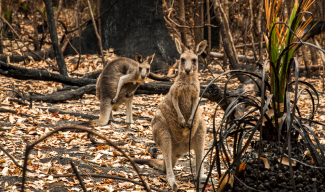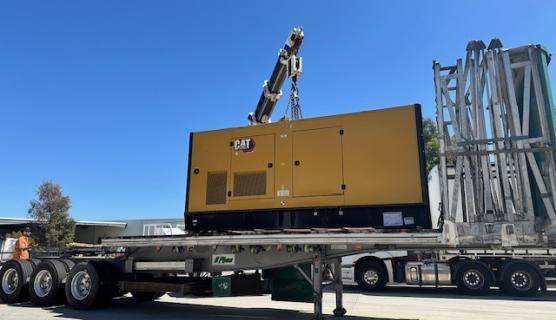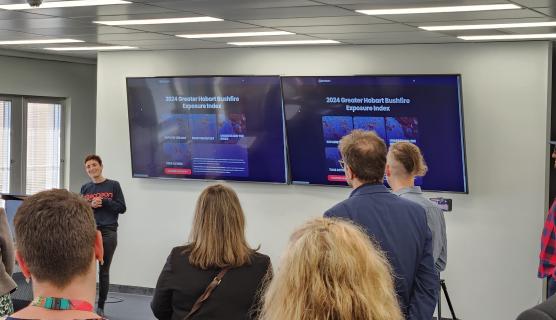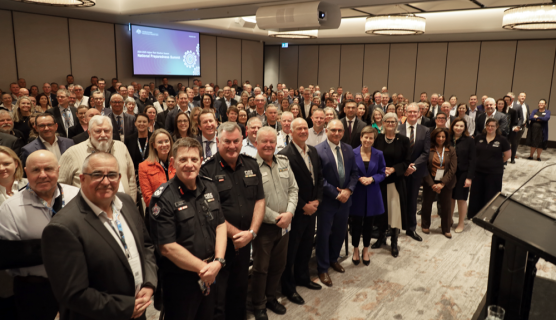Three billion animals were likely killed or displaced by the 2019-20 Black Summer bushfires. 2.46 billion reptiles, 61,000 koalas and almost 143 million other native mammals were caught up in the path of these devastating bushfires.¹
After such destruction, this Australian Wildlife Week highlights the need to support our precious wildlife to help their recovery and prepare for future disasters.
Australian Wildlife Week is celebrated nationally in the first week of October to encourage a positive relationship between humanity and nature.² It provides an opportunity to shine the light on how some of our program funding is supporting the work of committed wildlife parks and zoos that are caring for our native species.
Billabong Zoo: Wildlife and Koala Park
One of the funding recipients is the Billabong Zoo: Wildlife and Koala Park located in Port Macquarie. The project funding from Preparing Australian Communities Program – Local, is to install a new Perimeter Fire Suppression and Wildlife Protection System. The system is designed to protect the residents from the threat of bushfires, in and around the park.
Late 2019, the park came under direct threat from bushfire, with live embers threatening the safety of their precious residents. Fortunately, the local Rural Fire Service managed to keep the fire away from the property borders.
The new system to help them be prepared for the next fire, includes pipework and specially designed fireproof sprinkler heads, which run via the mains water supply, around the entire perimeter of the park. It will also include a mobile firefighting and water trailer, to assist with combatting any fires that occur in and around the park.
Mark Stone, Director/Owner of the park, spoke about how the fire came after a long period of drought and the lack of water combined with rudimentary firefighting equipment made the encroaching fire a real threat.
“Really I just had buckets and limited water which was just not going to help with such a huge fire. With the new system and firefighting trailer, we will be so much better prepared for the next fire.”
About this Project
Who: Billabong Zoo: Koala and Wildlife Park
What: To install a new Perimeter Fire Suppression and Wildlife Protection System and mobile firefighting and water trailer
Disaster Funding Program: Preparing Australian Communities Program - Local
Funding: $28,760
Benefit delivered: The park will be better prepared with the new equipment and will be much more agile to deal with the threat of future fires
Stage: Underway with anticipated completion before December 2022
Wildlife Hospital and Rehabilitation Centre
Another project dedicated to the welfare of our native animals is the Wildlife Hospital and Rehabilitation Centre to be constructed in Cobar Park near Lithgow which is at the preparatory stage. The hospital will service approximately a 100 kilometre radius in NSW’s Central West and Tablelands, an area surrounded by national parks and high density wildlife populations.
This project funded by the Local Economic Recovery program (LER) will build a regional Hospital, providing a venue for the rescue, rehabilitation and release of native species.
One specific feature of the new hospital will be onsite accommodation for a live-in vet or emergency nurse, in order to provide 24 hour professional care.
Working in collaboration with the established Byron Bay Wildlife Hospital for direction and ongoing management, Trevor Evans, Secretary to LER grant applicant, Australian Ecosystems Foundation Inc. (AEFI), hopes to have the hospital operational by mid-2023. AEFI is a not-for-profit, registered environmental organisation dedicated to saving Australian wildlife by protecting habitats and maintaining natural ecological processes.
“The number of animals badly injured during the Black Summer bushfires was just soul destroying. With this new hospital, we should be able to help so many more animals when the next bushfire season hits. There are so few animals left, those that are remaining are precious – with so many very close to being on the endangered list - we have to try to save every individual animal we can. ”
About this Project
Who: Wildlife Hospital and Rehabilitation Centre - grant applicant, Australian Ecosystems Foundation Inc. (AEFI)
What: To provide a regional venue for the rescue, rehabilitation and release of native species Disaster
Funding Program: Local Economic Recovery program
Funding: $720,500
Benefit delivered: The new hospital and rehab centre will service a large 100 kilometre radius area for injured native animals
Stage: Underway with anticipated completion mid 2023
To read more on how we’re helping communities impacted by the Black Summer bushfires visit: 2019-20 Black Summer Bushfires | National Emergency Management Agency (nema.gov.au)
²Australian Wildlife Week 2022 | Australian Wildlife Society (aws.org.au)








